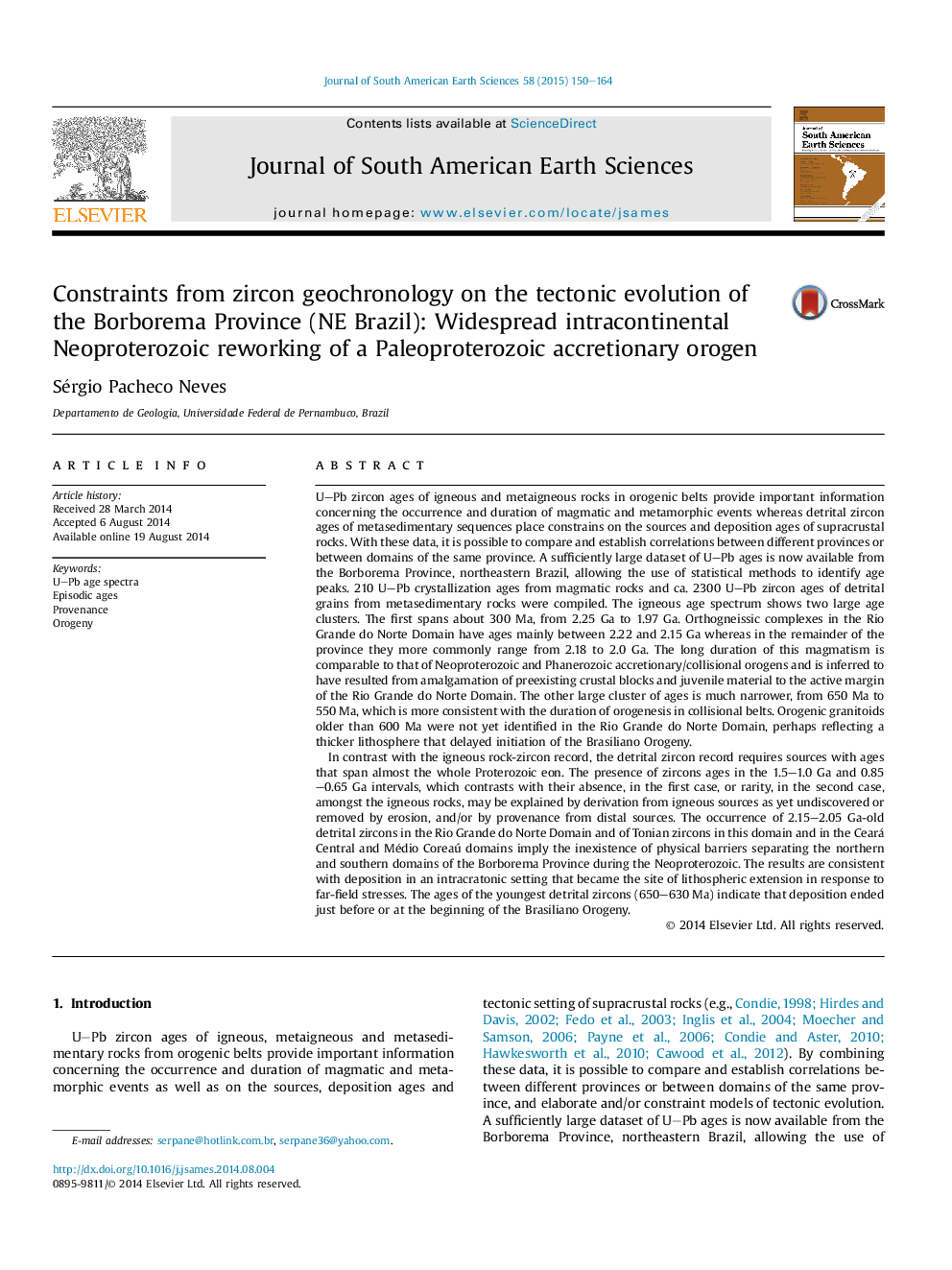| کد مقاله | کد نشریه | سال انتشار | مقاله انگلیسی | نسخه تمام متن |
|---|---|---|---|---|
| 4682242 | 1635151 | 2015 | 15 صفحه PDF | دانلود رایگان |

• 210 U–Pb crystallization ages and ca. 2300 U–Pb ages of detrital zircons were compiled.
• Igneous age spectrum is episodic, with large peaks at 2.25–1.95 Ga and 0.65–0.55 Ga.
• Ages of detrital zircons encompass almost all Proterozoic eon.
• Detrital zircon age spectra are consistent with deposition in an intraplate setting.
U–Pb zircon ages of igneous and metaigneous rocks in orogenic belts provide important information concerning the occurrence and duration of magmatic and metamorphic events whereas detrital zircon ages of metasedimentary sequences place constrains on the sources and deposition ages of supracrustal rocks. With these data, it is possible to compare and establish correlations between different provinces or between domains of the same province. A sufficiently large dataset of U–Pb ages is now available from the Borborema Province, northeastern Brazil, allowing the use of statistical methods to identify age peaks. 210 U–Pb crystallization ages from magmatic rocks and ca. 2300 U–Pb zircon ages of detrital grains from metasedimentary rocks were compiled. The igneous age spectrum shows two large age clusters. The first spans about 300 Ma, from 2.25 Ga to 1.97 Ga. Orthogneissic complexes in the Rio Grande do Norte Domain have ages mainly between 2.22 and 2.15 Ga whereas in the remainder of the province they more commonly range from 2.18 to 2.0 Ga. The long duration of this magmatism is comparable to that of Neoproterozoic and Phanerozoic accretionary/collisional orogens and is inferred to have resulted from amalgamation of preexisting crustal blocks and juvenile material to the active margin of the Rio Grande do Norte Domain. The other large cluster of ages is much narrower, from 650 Ma to 550 Ma, which is more consistent with the duration of orogenesis in collisional belts. Orogenic granitoids older than 600 Ma were not yet identified in the Rio Grande do Norte Domain, perhaps reflecting a thicker lithosphere that delayed initiation of the Brasiliano Orogeny.In contrast with the igneous rock-zircon record, the detrital zircon record requires sources with ages that span almost the whole Proterozoic eon. The presence of zircons ages in the 1.5–1.0 Ga and 0.85–0.65 Ga intervals, which contrasts with their absence, in the first case, or rarity, in the second case, amongst the igneous rocks, may be explained by derivation from igneous sources as yet undiscovered or removed by erosion, and/or by provenance from distal sources. The occurrence of 2.15–2.05 Ga-old detrital zircons in the Rio Grande do Norte Domain and of Tonian zircons in this domain and in the Ceará Central and Médio Coreaú domains imply the inexistence of physical barriers separating the northern and southern domains of the Borborema Province during the Neoproterozoic. The results are consistent with deposition in an intracratonic setting that became the site of lithospheric extension in response to far-field stresses. The ages of the youngest detrital zircons (650–630 Ma) indicate that deposition ended just before or at the beginning of the Brasiliano Orogeny.
Journal: Journal of South American Earth Sciences - Volume 58, March 2015, Pages 150–164